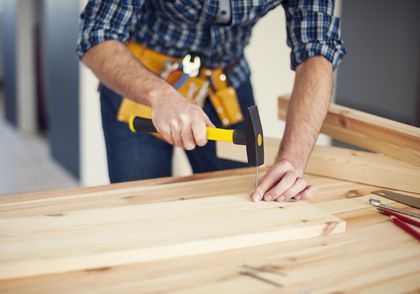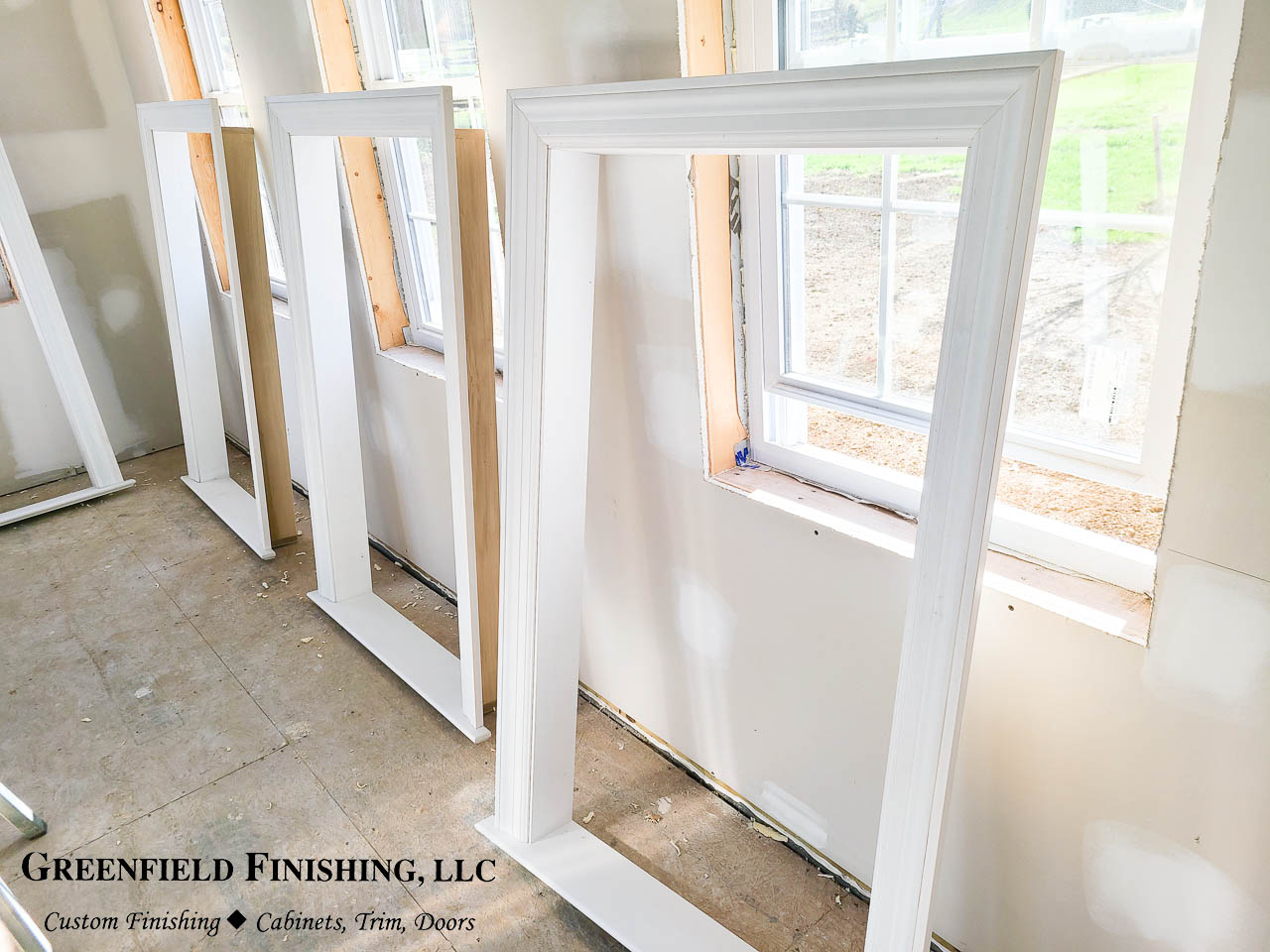
There are a few things you need to know about painting plywood. There are three main types of paints: Oil-based, Chalk, and Marine. If you want to make your plywood project last, you will need one of these types of paints. However, it is important to prepare the plywood first before choosing a paint. Prior to applying any paint, you must apply joint compound. Joint compound increases the durability of your paint.
Primer
Preparing your plywood project is essential before you can begin to paint it. Primer for plywood paint will ensure the product is strong and durable. You have the option of preparing the plywood in its entirety, or you can sand it to smoothen. You might have problems when you paint the surface if you don't prepare it in its entirety. Always check whether the plywood sheet is made from high-grade hardwood or has gaps or holes. You can tint the primer with a desired color to save on paint.
Rust Oleum Painter’s Touch primer is a good option for DIY projects. The oil-based formula is easy to use and dries in a matter of hours. It's best to use it on surfaces above the waterline. It can be painted once the primer is dry. Apply the primer and sand lightly the surface to make sure it is smooth and flawless.

Oil-based Paints
Choosing an oil-based paint for plywood is a wise decision. These paints will not soak into plywood, making them the best choice when painting plywood. This type of paint will also help to fill in any gaps that may occur, especially in rougher plywood. Before you choose your paint, here are some tips. Choose the best primer for your paint.
Primer helps paint stick better to plywood. Before painting, sand the surface with a fine-grit sandpaper and make sure that the dust is completely removed. Priming helps the paint adhere to the surface and will reduce the amount of paint needed. Make sure to use the primer that corresponds with the paint you are using. Primer can also be used to ensure paint adheres to plywood.
Chalk paints
It's a good idea use a sealer if you are painting plywood. Chalk paints are not like traditional paints. This can lead to chalk paints being susceptible to staining. A wax coating will prevent water from getting in the finish. You should combine a 500-milliliter can of wax with three or four litres worth of paint to make a wax sealer.
While there are several benefits to using chalk paints on plywood, there are also a number of disadvantages. The main drawback is the loss of luster. However, this can be overcome with some buffing. A buffing can be done after painting to give the finish a high luster look. Chalk paints have matte finishes, which is similar to satin. You can seal the finished product with furniture wax.

Marine plywood
There are many ways to paint marine plywood. Although a roller and brush give you a smoother result, using a brush to apply the paint can lead to drips. You should always start at the top when painting marine plywood. Then work your way downward. Excessive dripping can result from painting too much in a given area. Applying a light coat to the entire surface will cover it and can be left on overnight.
Make sure your material is waterproof before you paint. Marine plywood is made with multiple layers of softwood. Generally, multiple coats will be necessary, and the number of coats you need will depend on how much experience you have in painting. To make it easier to apply the next coat, sand off the surface after each coat. If you are not an experienced painter, you can hire someone to paint your Marine Plywood.
FAQ
Where can I purchase woodworking supplies
There are many places that you can find all the information you need. You could also visit hardware stores in your area or shop online at Amazon.com.
You can also search flea and garage sales for furniture and other materials that can be reused.
Can I refinish furniture that I make?
Yes! There are many different ways to refinish older furniture without the need for professional help. Here are some examples:
Sandpaper can be used to remove stains and scratches. Then wipe down the surface with a clean cloth.
Apply clear polyurethane paint. Let dry completely before moving furniture around.
Use acrylic paint to paint furniture.
Instead of using paint, stain is a better choice. The stain will give the furniture a rich look.
Use shellac wax. The wax will add shine to the wood and protect it.
Where do I start with woodworking?
It is best to actually build furniture to learn how to make it. You'll need tools, and you'll have to make mistakes along the way, but if you keep at it, you'll eventually figure out what you're doing.
Begin by choosing the project that you want to finish. It could be something as simple as a box or as elaborate as a full-scale entertainment center. Once you have chosen a project, locate a local woodworker who is skilled in this kind of work. Ask them for their advice about the tools and where they can be found. Maybe you can ask the person if they know of anyone who does this sort of work.
Do you have any tips on starting a woodworking business?
It is hard work to start a woodworking company. If you are passionate about your hobby, it will not be difficult to put in the work. You'll likely enjoy the challenge of owning your business.
Remember that you may encounter unexpected problems when starting a new venture. You may run out of money suddenly. Perhaps customers won't pay you as much as you had hoped. You need to be ready for these situations if you want to survive.
One tip is to have a separate banking account for your company. You'll be able to track how much money comes in and out.
How much will it cost to get started?
Because every project is unique, there aren't exact numbers. Consider these factors if you need to estimate the amount of money that you will require.
-
Material cost
-
Tools and equipment
-
Time spent on the project
-
Hourly rate
-
How much profit can you anticipate to make
-
Whether you plan to hire help
For those just beginning, it may be a good idea to start small with simple items like boxes and picture frames. You will gain more experience and be able to tackle larger projects.
Statistics
- Woodworkers on the lower end of that spectrum, the bottom 10% to be exact, make roughly $24,000 a year, while the top 10% makes $108,000. (zippia.com)
- In 2014, there were just over 237,000 jobs for all woodworkers, with other wood product manufacturing employing 23 percent; wood kitchen cabinets and countertop manufacturing employing 21 percent. (theartcareerproject.com)
- Average lumber prices rose about 600 percent between April 2020 and May 2021. (familyhandyman.com)
- Overall employment of woodworkers is projected to grow 8 percent from 2020 to 2030, about as fast as the average for all occupations. (bls.gov)
External Links
How To
How do you accurately measure wood?
There are many methods for measuring wood. We use a digital ruler (a tool to measure distances), laser level (used for leveling your work surface), and bubble level (used for levelling your work surface).
A digital caliper has two jaws that open and close. One jaw holds the measured object while the other measures the distance between the two points. The digital calculator is ideal for measuring very small distances, like the thicknesses or wood.
Laser levels use an infrared beam of light to project a line across the ground. The laser emits red dots on the line. You can check if the surface is level by looking down at the line. For larger surfaces, laser leveling is the best method of checking accuracy.
Bubble levels look similar to a compass. The center of the device contains a bubble. The device will indicate whether the surface is level as long as it is centered. Bubble levels are great for checking the accuracy and precision of smaller areas.